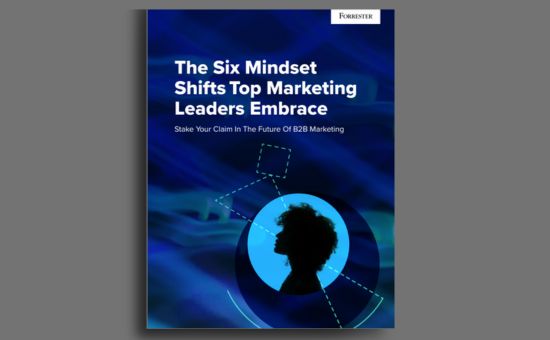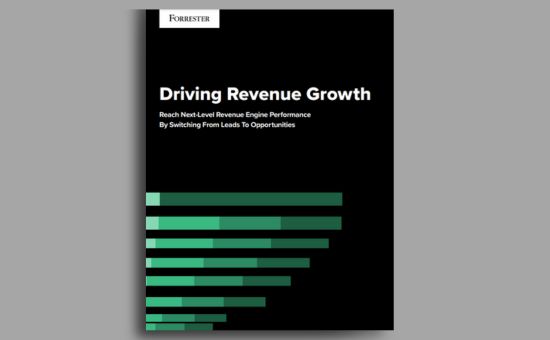Fuel Growth With Customer-Centric B2B Marketing Alignment | Forrester
B2B Digital Marketing
Alignment Must Be More Than Aspirational
B2B marketing leaders understand the significance of cross-functional alignment, yet achieving it remains a challenge. Individualized evaluations and incentives, coupled with a focus on internal processes, hinder meaningful alignment.
In the evolving landscape of complex business buying, this guide “Fuel Growth With Customer-Centric B2B Marketing Alignment” delves into the dynamics requiring substantial alignment. It offers actionable guidance for fostering alignment within marketing and across B2B functions. Gain insights on driving growth by aligning people, processes, and objectives with the buyer journey and customer lifecycle.
Rethinking Alignment In A Complex Buying Landscape
The expectations of B2B buyers have reached unprecedented levels, as highlighted by a Forrester survey where 83% expressed dissatisfaction with their winning provider in various aspects. This dissatisfaction often stems from the existence of silos between marketing, sales, and other customer-facing functions. Issues such as disconnected systems, lack of information-sharing, and isolated tactics contribute to a disjointed experience for buyers.
Given the significant shifts in B2B buying behavior in recent years, conventional processes and approaches may no longer be effective in making headway. The conversion ratio from initial engagement to a closed/won deal is reported to be less than 1% for most B2B marketing and sales organizations, according to Forrester benchmark metrics data.
Understanding the key behavioral shifts is crucial for fostering meaningful cross-functional alignment. B2B marketers, along with their counterparts in sales and product teams, need to acknowledge the following:
- Self-Directed Buyers: A significant portion of B2B buying interactions is now self-guided, comprising over half of the total interactions, according to Forrester’s survey data. Buyers prefer to seek information independently and engage with providers only when ready. Additionally, buyers are becoming more guarded with their contact information, making it challenging to determine when they are exploring your offerings.
- Complex Buying Scenarios: The average buying cycle involves three considered vendors, four separate departments, and eight buying group members, with four of them external to the buyer’s company. Marketers and sellers must collaborate to understand the connections between buying group members and the role each plays, along with the larger dynamics influencing purchasing decisions.
- Extended Purchasing Processes: B2B marketing decision-makers surveyed by Forrester indicate that buyers and customers are taking longer to commit to a purchase than in the past. Moreover, the sequence of steps that buyers follow before making a purchase is rarely linear, making it challenging for planned tactics to align neatly with buyers’ processes.
The increased empowerment and self-direction of buyers emphasize that the buyer’s process is paramount. Marketing, sales, and product functions must align around this process. Marketing leaders, leveraging their profound understanding of customers, play a critical role in driving alignment around buyer value. This approach is fundamental to building and sustaining growth firmly rooted in customer obsession.
The Tenets Of Effective Cross-Functional Alignment
Teams that are committed to aligning themselves with the needs and preferences of buyers and customers may find it challenging to determine where to begin or what the desired outcome should be. While this process will vary from one company to another, having good intentions alone is insufficient without a concrete action plan.
Forrester has engaged with leaders in B2B marketing, sales, and product development and has identified key areas that can have a significant impact. To promote alignment and strengthen it across functions, it is advisable to start with the following areas and actions.
Identify and Gather Data on Buyer and Customer Preferences:
- Although most companies possess ample amounts of data, they often fail to gather insights into what buyers and customers truly value and how they perceive it. Alternatively, this data might be available only to specific teams, creating information silos.
- It is essential to bring together leaders from different functions to assess the existing data silos and establish mechanisms for sharing information among teams.
- If your organization lacks insight into buyer preferences or how customers derive value from your products, it is crucial to initiate data collection through surveys, customer conversations, or other means.
- Establish processes for disseminating and incorporating buyer and customer feedback to enable marketers to create more effective messaging, empower sellers to engage in more productive interactions, and assist product teams in enhancing the value of company offerings.
Reevaluate Metrics:
- Many organizations tend to focus on internally oriented metrics (e.g., marketing-sourced leads, click-through rates, conversion rates), which can impede alignment and obscure or undermine business outcomes.
- Collaborate with colleagues across functions to assess the extent to which the metrics used to evaluate marketing results genuinely reflect holistic success.
- Consider introducing shared metrics that prioritize buyer and customer value, such as a metric measuring the “speed of information” to evaluate how efficiently prospective buyers find relevant information on your website.
- Post-purchase, you can explore metrics based on the percentage of customers who achieve specific milestones with your product or service.
Optimize Revenue Technology:
- According to Forrester survey data, around 40% of B2B marketing leaders allocate more than 15% of their budget to technology.
- It is common for organizations to have redundant or overlapping technology tools within their revenue ecosystem, such as multiple CRM systems or duplicative marketing automation platforms.
- Break this cycle by seeking efficiencies, reducing redundancies and costs, and streamlining and consolidating technology tools.
- This optimization process can improve internal process agility and enhance the overall customer experience.
Invest in Revenue Operations Capabilities:
- Implementing a revenue operations function is a direct approach to bridging persistent alignment gaps within B2B organizations.
- Revenue operations leaders and teams bring together data, processes, technology, and talent to enhance customer lifecycle management and drive growth.
- Revenue operations is not merely an organizational construct but a strategy aimed at maximizing customer value and, consequently, company performance.
- By breaking down data and insights silos across the business, revenue operations enable companies to develop a shared view of the customer and ensure consistency in all customer acquisition, growth, and retention interactions.
Foster a Collective Customer-First Mindset:
- Despite considering themselves customer-focused, many B2B organizations still prioritize their products when setting goals and developing strategies.
- Genuine alignment that fosters meaningful growth should be rooted in a buyer and customer-centric approach.
- Marketing leaders are well-positioned to cultivate a culture of customer obsession within their teams and throughout the organization.
- Encourage your team to adopt a customer lens when creating public-facing materials and engaging with buyers and customers.
- At the company level, work towards cultivating a customer-first mindset by urging company leadership to evaluate board minutes, earnings calls, and mission statements to assess their effectiveness in creating customer value.
- If an activity or program does not appear in executive reports or dashboards, no amount of process improvement at lower levels of the organization will have a significant impact.
As you embark on this journey, recognize change management’s role. Top-performing firms actively dedicate time and resources to change management by carefully considering employee hiring and training, using customer-centric language internally, and celebrating stories that reflect customer value and drive the desired change. Marketing leaders are pivotal in setting the tone for companywide customer-centered change.
Ready to ditch the silos and dominate the B2B market? Download the guide to alignment.
The Table of Contents of “Fuel Growth With Customer-Centric B2B Marketing Alignment” Guide:
- Alignment Must Be More Than Aspirational
- Rethinking Alignment In A Complex Buying Landscape
- The Tenets Of Effective Cross-Functional Alignment
- The Four Dimensions Of Value
- Uplevel Marketing-Sales Alignment
- Strengthen Alignment Within Marketing
- Start Your Alignment Journey
- Additional Resources
Number of Pages:
- 10 pages
Pricing:
- Free
Warning: Undefined array key "sidebar_ads" in /home/dmc/public_html/wp-content/themes/DMC/functions/helpers.php on line 824






